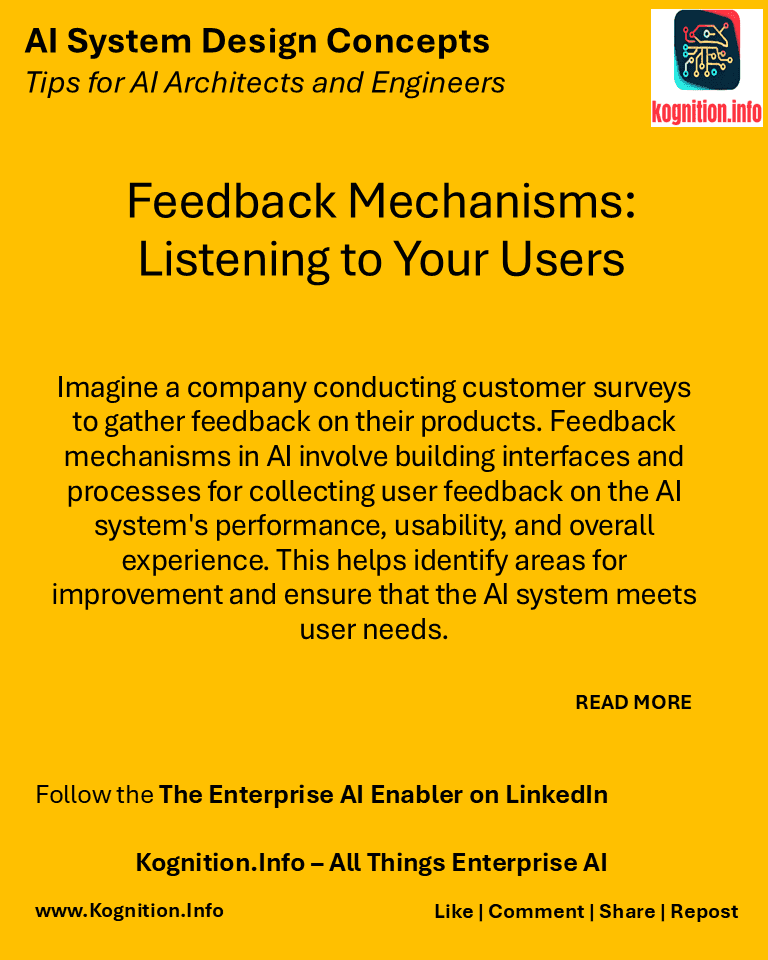
Imagine a company conducting customer surveys to gather feedback on their products. Feedback mechanisms in AI involve building interfaces and processes for collecting user feedback on the AI system’s performance, usability, and overall experience. This helps identify areas for improvement and ensure that the AI system meets user needs.
Use cases:
- Rating predictions: Allowing users to rate the accuracy or helpfulness of AI-generated predictions or recommendations.
- Providing suggestions: Enabling users to submit suggestions for improvements or new features.
- Reporting issues: Providing channels for users to report bugs, errors, or unexpected behavior.
How?
- Choose feedback channels: Provide various channels for feedback, such as in-app forms, surveys, or dedicated feedback pages.
- Make feedback easy to provide: Design simple and intuitive interfaces for users to submit feedback.
- Analyze and categorize feedback: Process feedback data to identify trends, patterns, and areas for improvement.
- Act on feedback: Use feedback to inform model updates, bug fixes, or new feature development.
Benefits:
- Continuous improvement: Enables ongoing refinement and improvement of the AI system based on user feedback.
- Enhanced user experience: Shows users that their feedback is valued and used to improve the system.
- Increased user satisfaction: Leads to a more user-centered and satisfying AI experience.
Potential pitfalls:
- Bias in feedback: Feedback may be biased or unrepresentative of the entire user population.
- Feedback volume: Collecting and processing large volumes of feedback can be challenging.
- Ignoring feedback: Failing to act on feedback can erode user trust and hinder system improvement.
